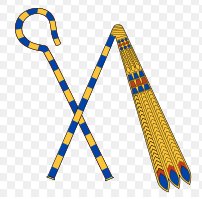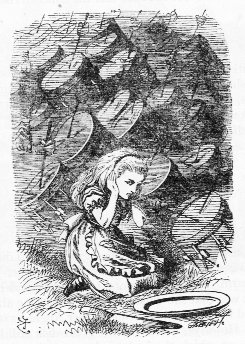If the map of the ecliptic path of the Sun (and the other planets) ended abruptly after half a year, at Spica, then the way forward could have continued along the equator of the sky. Given a star map designed about 4500 years ago, the point where the ecliptic crossed the equator would have been ca 4500 / 26000 * 365 = 63 days later in the year than at the time of rongorongo. 0h at Rogo in Gb6-26 (408) was 64 days (glyphs) earlier in the year than 0h at the time of the Hyades Gate. Similarly was 12h at SEPTEMBER 22 and heliacal Antares comparable to heliacal Gienah at September 22. Antares (249) - Gienah (185) = 64. In myth the way forward, beyond the end station of the ecliptic path down to the equator, seems to have been described as somehow the same path again in reverse - although only dimly as in a smoking mirror: ... But the time of his predestined defeat by the dark brother, Tezcatlipoca, was ever approaching, and, knowing perfectly the rhythm of his own destiny, Quetzalcoatl would make no move to stay it. Tezcatlipoca, therefore, said to his attendants, 'We shall give him a drink to dull his reason and show him his own face in a mirror; then, surely, he will be lost'. And he said to the servants of the good king, 'Go tell your master that I have come to show him his own flesh!' But when the message was brought to Quetzalcoatl, the aging monarch said, 'What does he call my own flesh? Go and ask!' And when the other was admitted to his presence: 'What is this, my flesh, that you would show me?' Tezcatlipoca answered, 'My Lord and Priest, look now at your flesh; know yourself; see yourself as you are seen by others!' And he presented the mirror. Whereupon, seeing his own face in that mirror, Quetzalcoatl immediately cried out, 'How is it possible that my subjects should look upon me without fright? Well might they flee from before me. For how can a man remain among them when he is filled as I am with foul sores, his old face wrinkled and of an aspect so loathsome? I shall be seen no more, I shall no longer terrify my people'. Presented the drink to quaff, he refused it, saying that he was ill; but urged to taste it from the tip of his finger, he did so and was immediately overpowered by its magic. He lifted the bowl and was drunk. He sent for Quetzalpetlatl, his sister, who dwelt on the Mountain Nonoalco. She came, and her brother gave her the bowl, so that she too was drunk. And with all reason forgotten, the two that night neither said prayers nor went to the bath, but sank asleep together on the floor. And in the morning Quetzalcoatl said, in shame, 'I have sinned; the stain of my name cannot be erased. I am not fit to rule this people. Let them build a habitation for me deep under the ground; let them bury my bright treasures in the earth; let them throw the glowing gold and shining stones into the Precious Waters where I take my nightly bath. And all this was done. The king remained four days in his underground tomb, and when he came forth he wept and told his people that the time had come for his departure to the Red Land, the Dark Land, the Land of Fire. Having burned his dwellings behind him, buried his treasures in the mountains, transformed his chocolate trees into mesquite, and commanded his multicolored birds to fly before him, Quetzalcoatl, in great sorrow, departed. Resting at a certain place along the way and looking back in the direction of Tula, his City of the Sun, he wept, and his tears went through a rock; he left in that place the mark of his sitting and the impress of his palms. Farther along, he was met and challenged by a company of necromancers, who prevented him from proceeding until he had left with them the arts of working silver, wood, and feathers, and the art of painting. As he crossed the mountains, many of his attendants, who were dwarfs and humpbacks, died of the cold. At another place he met his dark antagonist, Tezcatlipoca, who defeated him at a game of ball. At still another he aimed with an arrow at a large pochotl tree; and the arrow too was a pochotl tree, so that when he shot it through the first they formed a cross. And so he passed along, leaving many signs and place-names behind him, until, coming at last to where the sky, land, and water come together, he departed. He sailed away on a raft of serpents, according to one version, but another has it that his remaining attendants built a funeral pyre, into which he threw himself, and while the body burned, his heart departed and after four days appeared as the rising planet Venus. All agree, however, that he will presently return. He will arrive with a fair-faced retinue from the east and resume sway over his people; for although Tezcatlipoca had conquered, those immutable laws that had determined the destruction of Tula assigned likewise its restoration. Quetzalcoatl was not dead. In one of his statues he was shown reclining, covered with wrappings, signifying that he was absent or 'as one who lays him down to sleep, and that when he should wake from that dream of absence, would rise to rule again the land'. He had built mansions underground to the Lord of Mictlan, the lord of the dead, but did not occupy these himself, dwelling, rather, in that land of gold where the sun abides at night. This too, however, is underground. Certain caverns lead to it, one of which, called Cincalco, 'To the Abode of Abundance', is south of Chapultepec; and through its gloomy corridors men can reach that happy land, the habitation of the sun, which is still ruled by Quetzalcoatl. Moreover, that land is the land from which he came in the beginning ... All this, which in so many ways parallels the normal imagery of the Old World culture-hero myths, telling of the one who is gone, dwells underground in a happy, timeless land, as lord of the realm of the happy dead, like Osiris, but will rise again, we can read without surprise. But what is surprising indeed was the manner of Quetzalcoatl's actual return. The priests and astrologers did not know in what cycle he was to reappear; however, the name of the year within the cycle had been predicted, of old, by Quetzalcoatl himself. Its sign was 'One Reed' (Ce Acatl), which, in the Mexican calendar, is a year that occurs only once in every cycle of fifty-two. But the year when Cortes arrived, with his company of fair-faced companions and his standard, the cross, was precisely the year 'One Reed'. The myth of the dead and resurrected god had circumnavigated the globe ... Logic says, however, there must be some path up from Spica to the position from where already in the following year the Sun could return to follow his ecliptic path down again. Counting 6 further stations ahead from Spica will add up to 20 + 6 = 26.
Beyond the Winnowing Basket (or the shreshing whip, Lamed) could come the Sea with a final 10 stations: ... The first half beginning with Alef - an ox, and ending with Lamed - a whip. The second list begins with Mem - water, and continues with Nun - fish, Samek - fish bones, Ayin - a water spring, Peh - the mouth of a well, Tsadi - to fish, Kof, Resh and Shin are the hook hole, hook head and hook teeth, known to exist from prehistoric times, and the Tav is the mark used to count the fish caught ...  The C text seems to have documented a break in time beyond heliacal η Arietis, 31 days after 0h - and at equinox in Roman times ('March 25). April 22 was 100 days more than 378 (= 14 * 27) and in the night, close to the Full Moon, was Arcturus (α Bootis):
Metoro told Bishop Jaussen that here drums were heard and the sky was moving (rutua - te pahu - rutua te maeva). When the Sun no longer ruled, it would have been natural to shift the attention around and instead to look at the stars in the night. Therefore I blue-marked the nakshatra stars and black-marked the heliacal stars.
The reason for a Furrow (eastern half of Virgo) and at the opposite side of the year compared to the Furrow of Heaven (Pidnu-sha-Shame) could have been a reflection 'down on earth' of what earlier happened up in the Sky. 202 (Spica) - 27 (Sheratan) = 175 = 350 / 2. 27 (Sheratan) + 183 = 210 = October 17 (290).
At the opposite side of the year compared to heliacal Aldebaran was heliacal Antares, which once could have served as a 'morning star' for those living south of the equator. Or they could have looked at the Full Moon and found nakshatra Aldebaran:
South of the equator Spica would not be 'underground' but above (i nika):
|
|||||||||||||||||||||||||||||||||||||||||||||||||||||||||||||||||||||||||||||||||||||||||||||||||||||||||||||||||||||||||||||||||||||||||||||||||||||||||||||||||||||||||||||||||||||||||||||||||||||||||||||||||||||||||||||||||||||||||||||||||||||||||||||||||||||||||||||||||||||||||||||||||||||||||||||||













